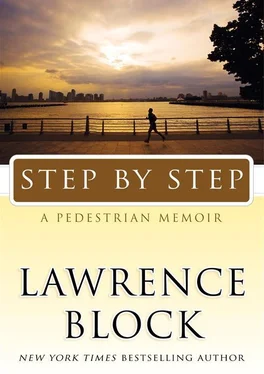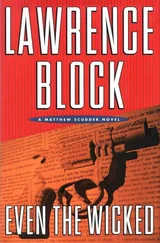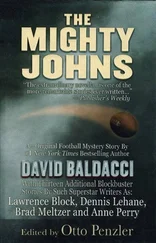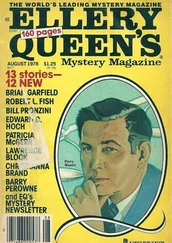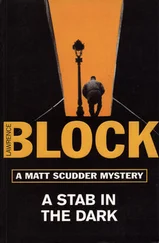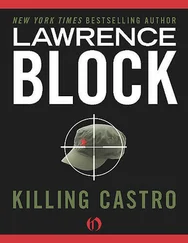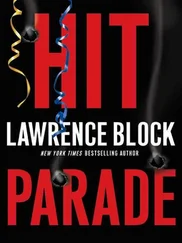Lawrence Block - Step by Step
Здесь есть возможность читать онлайн «Lawrence Block - Step by Step» весь текст электронной книги совершенно бесплатно (целиком полную версию без сокращений). В некоторых случаях можно слушать аудио, скачать через торрент в формате fb2 и присутствует краткое содержание. Год выпуска: 2009, ISBN: 2009, Издательство: William Morrow, Жанр: Биографии и Мемуары, Юмористические книги, на английском языке. Описание произведения, (предисловие) а так же отзывы посетителей доступны на портале библиотеки ЛибКат.
- Название:Step by Step
- Автор:
- Издательство:William Morrow
- Жанр:
- Год:2009
- ISBN:978-0-06-172181-6
- Рейтинг книги:3 / 5. Голосов: 1
-
Избранное:Добавить в избранное
- Отзывы:
-
Ваша оценка:
- 60
- 1
- 2
- 3
- 4
- 5
Step by Step: краткое содержание, описание и аннотация
Предлагаем к чтению аннотацию, описание, краткое содержание или предисловие (зависит от того, что написал сам автор книги «Step by Step»). Если вы не нашли необходимую информацию о книге — напишите в комментариях, мы постараемся отыскать её.
bestselling author comes a touching, insightful, and humorous memoir of an unlikely racewalker and world traveler.
Step by Step — читать онлайн бесплатно полную книгу (весь текст) целиком
Ниже представлен текст книги, разбитый по страницам. Система сохранения места последней прочитанной страницы, позволяет с удобством читать онлайн бесплатно книгу «Step by Step», без необходимости каждый раз заново искать на чём Вы остановились. Поставьте закладку, и сможете в любой момент перейти на страницу, на которой закончили чтение.
Интервал:
Закладка:
The Ultracentric consists of a variety of races, all on the same weekend and over the same course. There are races lasting six, twelve, twenty-four, and forty-eight hours, along with a half-marathon. At one point back in June, carried away by Andy Cable’s example in the six-day event, I’d actually considered trying the forty-eight-hour Ultracentric, but if Wakefield accomplished nothing else, at least it relieved me of that particular insanity.
I gave my blisters time to heal, and then I began getting out and walking along the Hudson again, tentatively at first. I found the Ultracentric website and signed up for the walking division of the twenty-four-hour race. What I kept neglecting to do, though, was book my flight to Albuquerque, and the day came when I realized I didn’t want to go. It would be a fine opportunity to add New Mexico to my marathon list, and a chance to see my niece Jennifer, and meet for the first time her husband and their twin daughters.
But I didn’t want to get on a plane, and I didn’t want to walk a marathon for which I was imperfectly trained, and the fact that I’d paid an entry fee didn’t seem sufficient reason to force myself to go.
Some other time, I thought. And by the last days of August I got serious about training for Texas.
I walked fifty miles the last week of August. I know this because I entered each day’s walk in my calendar. Six miles Sunday, four Monday, a long walk of sixteen on Tuesday, four on Wednesday, twelve Thursday, and four miles each on Friday and Saturday. (The distances were estimates, as I made life simpler by counting the time I spent and figuring I averaged fifteen-minute miles.)
Most people who write about walking or running or just about any athletic discipline will stress the importance of keeping a training log. Logs range from a simple notation of time or distance — or, more often, time and distance — to elaborate journal entries in which one records the time of day, the weather, the route taken, and, I suppose, the flora and fauna observed on the trail. All of this data will presumably be of benefit later on to the person jotting it down, not to mention the role it might someday play in the lives of generations yet unborn.
Well, maybe, but I’m inclined to put it right up there with counting your steps. Why on earth would I want to know at some future date that it was threatening to rain at the beginning of a particular walk, but that the sun broke through the cloud cover three miles into my walk, and that I was averaging 14:21 minutes per mile when I spotted the ruby-throated hummingbird?
Nevertheless, I find it useful to keep track of my training, albeit in a minimalist fashion, with nothing noted beyond the time spent walking. If I’m preparing for a race, I may want to increase my mileage a certain amount each week, and then taper off in the weeks immediately preceding the event. A log makes it easy to keep track.
But it has another effect that I’ve noticed, and that’s that I find myself going an extra mile just so that I’ll have one more mile to record in my log. Now nobody else is ever going to see that log, nor will I myself ever look at it again — except now, of course, when I find myself referring to it in order to write about it.
Some years back I knew a fellow who was a man of many parts — a book editor, a ski instructor, and I forget what else. He mentioned that he was in the process of becoming a certified appraiser, something that had nothing much to do with any other aspect of his life as far as I could tell. “I asked a friend if he thought it made any sense for me,” he said, “and he told me I really ought to go ahead with it. It wouldn’t take too much effort on my part, he pointed out, and it might be interesting in and of itself, and there was one other reason to do it. ‘Pat,’ he said, ‘it’s the kind of idiosyncratic accomplishment that’ll really dress up an obituary.’”
During my training for the Ultracentric, I didn’t give much consideration to the look of my training log — or my obituary, as far as that goes. I rang up fifty miles that first week, and decided I could safely increase my total by 10 percent a week. I’d establish a pattern of alternate long and short days, and I’d keep the short days at an hour for the time being, while I gradually extended my long days. Accordingly I walked fifty-six miles the second week, then sixty-two, seventy, and seventy-eight — which took me to the end of September. Tuesdays were my longest days, and by the end of the month I’d upped my Tuesday walk from four to seven hours. One of those Tuesdays it rained, and I did my five hours on a treadmill. I had no problem with it, or with the seven hours I put in the last Tuesday of the month.
Twenty-eight miles. “I’ve done the Moron’s Marathon,” I told Lynne, after having spent those seven hours at the river’s edge, the first four doing repeated circuits of just two piers, the next three striding down to the foot of Manhattan and around the other side, then coming back again.
And I felt fine. My feet were holding up nicely, their bottoms toughening as planned. I’d be tired at the end of a seven-hour walk, but not completely exhausted; my legs would be sore, but not agonizingly so. I was right on schedule, and all I had to do was keep going.
Eighty-four miles the first week of October, with my Tuesday walk extending to seven and a half hours. That was thirty miles, I thought at the time, and all I had to do was throw in an extra fifteen minutes and I’d have completed a fifty-kilometer training walk.
Maybe next week, I told myself.
But the following week the rest of my life got in the way a little, with a Tuesday lunch date forcing me to readjust my schedule. Consequently the long walk for the week came on Wednesday, and only ran to six and a half hours. Still, that was a marathon, or close to it. And, when the week was over, I’d put in twenty-three hours for a total of ninety-two miles.
Ninety-two miles, and I still had five weeks before the Ultracentric. I could start tapering off now, doing a little less walking each week, and not really training at all the week before the race. And then, when I got to Texas, I ought to be fine.
Eighty miles seemed well within reach. Of course something could always go wrong out on the course, whether it was the kind of rain we’d had at Houston, the murderous heat of Wakefield 2006, or another race-ending electrical storm. Or something could go wrong with me: the kind of foot pain that had cropped up at Huntington Beach and returned with a vengeance in New Orleans, or the back spasms that had pulled me up short twenty hours into the race in Minnesota.
I was fitting in the occasional session at the gym, trying to build core strength as a preventive for back problems. And I didn’t think my toes would bother me this time around, because I’d done some extensive experimental surgery — not on my feet, God forbid, but on my shoes. I’d cut the fronts out of a pair of old New Balance shoes — I’d got the idea from Andy Cable, who’d turned up so attired at Wakefield, the fore portion of each shoe so neatly excised I thought for a moment they’d come that way from the manufacturer. I did all my training in those shoes, or in another similarly mutilated pair, and as a result my toes were never sore. So that was one problem area I could probably forget about, but that didn’t mean something else wouldn’t flare up.
The hell with it. There was no point in trying to foresee the unforeseeable. If something unavoidable went wrong, so be it — there would be other races. Until then I could relax, knowing I was doing everything I could by way of preparation. I’d be in great shape for the Ultracentric.
All I had to do was continue my training.
That was all I had to do, and I didn’t have to do it for that long, either. Just four weeks, really, because I’d be well advised to take the last week off altogether. And the fourth week wouldn’t amount to much more than stretching my legs, going out for an hour or so every other day.
Читать дальшеИнтервал:
Закладка:
Похожие книги на «Step by Step»
Представляем Вашему вниманию похожие книги на «Step by Step» списком для выбора. Мы отобрали схожую по названию и смыслу литературу в надежде предоставить читателям больше вариантов отыскать новые, интересные, ещё непрочитанные произведения.
Обсуждение, отзывы о книге «Step by Step» и просто собственные мнения читателей. Оставьте ваши комментарии, напишите, что Вы думаете о произведении, его смысле или главных героях. Укажите что конкретно понравилось, а что нет, и почему Вы так считаете.
